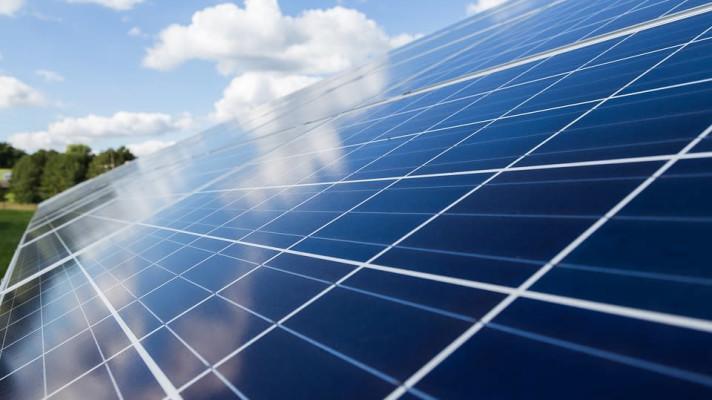Solar panel made with ion cannon is cheap enough to challenge fossil fuels
Twin Creeks, a solar power startup that emerged from hiding today, has developed a way of creating photovoltaic cells that are half the price of today´s cheapest cells, and thus within reach of challenging the fossil fuel hegemony. The best bit: Twin Creeks´ photovoltaic cells are created using a hydrogen ion particle accelerator.
As it stands, almost every solar panel is made by slicing a 200-micrometer-thick (0.2mm) wafer from a block of crystalline silicon. You then add some electrodes, cover it in protective glass, and leave it in a sunny area to generate electricity through the photovoltaic effect (when photons hit the silicon, it excites the electrons and generates a charge). There are two problems with this approach: Much in the same way that sawdust is produced when you slice wood, almost half of the silicon block is wasted when it´s cut into 200-micrometer slices; and second, the panels would still function just as well if they were thinner than 200 micrometers, but silicon is brittle and prone to cracking if it´s too thin.
 This is where Twin Creeks´ ion cannon, dubbed Hyperion, comes into play. If you look at the picture above, 3-millimeter-thick silicon wafers are placed around the outside edge of the big, spoked wheel. A particle accelerator bombards these wafers with hydrogen ions, and with exacting control of the voltage of the accelerator, the hydrogen ions accumulate precisely 20 micrometers from the surface of each wafer. A robotic arm then transports the wafers to a furnace where the ions expand into hydrogen gas, which cause the 20-micrometer-thick layer to shear off. A metal backing is applied to make it less fragile (and highly flexible, as you see on the right), and the remaining silicon wafer is taken back to the particle accelerator for another dose of ions. At a tenth of the thickness and with considerably less wastage, it´s easy to see how Twin Creeks can halve the cost of solar cells.
This is where Twin Creeks´ ion cannon, dubbed Hyperion, comes into play. If you look at the picture above, 3-millimeter-thick silicon wafers are placed around the outside edge of the big, spoked wheel. A particle accelerator bombards these wafers with hydrogen ions, and with exacting control of the voltage of the accelerator, the hydrogen ions accumulate precisely 20 micrometers from the surface of each wafer. A robotic arm then transports the wafers to a furnace where the ions expand into hydrogen gas, which cause the 20-micrometer-thick layer to shear off. A metal backing is applied to make it less fragile (and highly flexible, as you see on the right), and the remaining silicon wafer is taken back to the particle accelerator for another dose of ions. At a tenth of the thickness and with considerably less wastage, it´s easy to see how Twin Creeks can halve the cost of solar cells.
According to Technology Review, ion beams have been considered before, but particle accelerators were simply too expensive to be commercially viable. This is the flip side of Twin Creeks´ innovation: It had to make its own particle accelerator which is "10 times more powerful" (100mA at 1 MeV) than anything on the market today.
When all´s said and done, if you buy Twin Creeks´ equipment, it is promising a cost of around 40 cents per watt, about half the cost of panels currently coming out of China (where the vast majority of solar panels are made). At that price, solar power begins to encroach on standard, mostly-hydrocarbon-derived grid power - but, of course, we still need to create batteries that can store solar power over night. Maybe Stanford has the answer to that problem, though, with its everlasting nanobattery - and then there´s Nortwestern University´s graphene-doped lithium-ion batteries, and, perhaps most realistically, electric cars like the Nissan Leaf that can double up as a glorified house battery.
Read more at Twin Creeks
